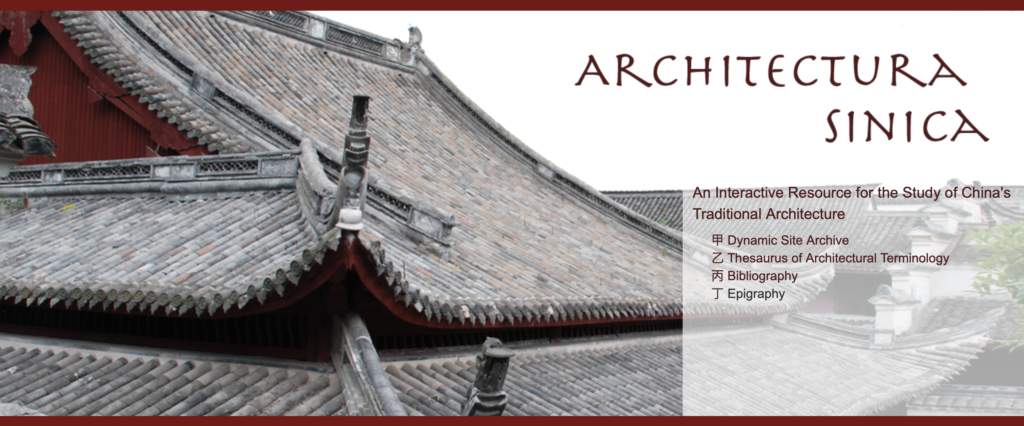Architectura Sinica
 Architectura Sinica is a public, browser-based research portal for the study of China’s traditional architecture, with a particular focus on architecture of the Tang through Ming dynasties (618-1644 CE). The site currently consists of three portions: a dynamic site archive, a dictionary and thesaurus of traditional Chinese architectural terminology, and a bibliography of sources.
Architectura Sinica is a public, browser-based research portal for the study of China’s traditional architecture, with a particular focus on architecture of the Tang through Ming dynasties (618-1644 CE). The site currently consists of three portions: a dynamic site archive, a dictionary and thesaurus of traditional Chinese architectural terminology, and a bibliography of sources.
As one instance of the Vanderbilt-branded Srophé application, the Dynamic Site Archive in Architectura Sinica is designed to take advantage of geolocation and linked open data. Each site is georeferenced and linked to unique images as well as analog and digital bibliographic information. With student, library, and research faculty collaboration here at Vanderbilt, basic archaeological and textual information is gradually being added and made available to the public to further awareness and future research on the architectural heritage of China.
This project is enhanced by ATTCAT (Annotation and Translation of Traditional Chinese Architecture Terminology), an international, multi-university workshop that seeks to annotate, translate, and illustrate historical terms used in describing and building traditional structures in China. Sponsored by Southeast University, Nanjing, and initiated by a scholars working at Southeast U and Vanderbilt, ATTCAT participants from universities in China, Japan, the US, Germany, and Austria gather for annual workshops to discuss research on particular terms and collate parallel terms in Chinese and other languages (primarily English, but other languages may). After revision, the results of their research are published digitally through the Architectura Sinica.
To learn more about Architectura Sinica, please contact Tracy Miller.
